
COVID-19 lowers immunity response after vaccination, shows research
Covid and vaccinations
According to research, those who had the COVID-19 virus before receiving their vaccinations had a weakened immune response.
The study also discovered that those who have received the vaccine and have contracted COVID-19 have lower levels of the “key immunity cell” that fights the virus than those who have received the vaccine but have not acquired it.
Beginning in Wuhan, China, COVID-19 quickly spread, infecting billions of individuals.
According to research in the journal Immunity, those who have received vaccinations are more secure and resistant to the virus than those who have not.
Also Read: What are the new XBB and BF.7 variants of Covid-19?
The Stanford Institute of Immunity’s director and microbiologist Mark M. Davis led a team of researchers who examined how COVID-19, also known as SARS-CoV-2, and its vaccine impact the body’s immune response.
The CD4+ T cells and CD8+ T cells used to investigate the response coordinate the immune response to the virus, assisting in the removal of the infection from the body.
The SARS-CoV-2 study showed that the Pfizer-BioNTech vaccine utilizes some COVID-19 components to trigger the immune response even in the absence of infection.
The experts looked at information from three volunteer groups’ blood cells. one who got the vaccine twice but had never been exposed to the disease. After contracting the disease, the second group of volunteers got two shots of the vaccine. People who had the virus but hadn’t gotten the vaccine made up the third category.
Also Read: Pakistan reports 12 coronavirus cases in 24 hours
According to the study, individuals who had received the vaccine and had never been exposed to the virus responded strongly to the virus’ protein.
According to the research, these T cells also produced a variety of cytokines, which are cell-signaling molecules that draw in additional immune cells, such as B cells that make antibodies, to combat pathogens.
The research found that after infection, the second group of vaccine recipients had lower levels of cell production and functionality.
The second set of people produced fewer CD8+ T cells than the first group of people, according to research.
Therefore, the researchers came to the conclusion that COVID-19 impairs the CD8+ T cell response and proposed that vaccines should be developed that could specifically boost the production of CD8+ T cell responses in those who have already been exposed to the virus.
Have something to add to the story? Comment down below!
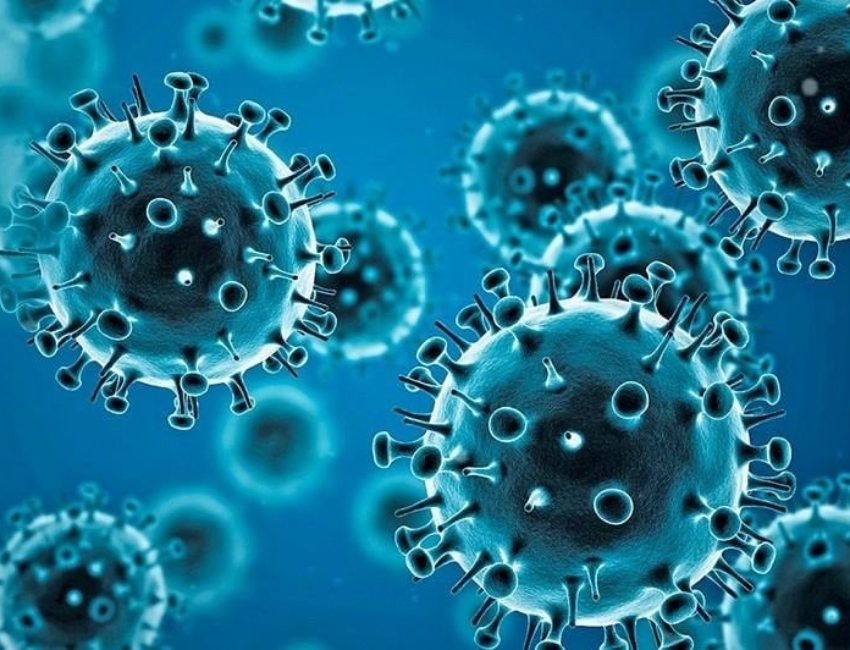
What are the new XBB and BF.7 variants of Covid-19?
The National Institute of Health (NIH) has issued a clarification that no new variant has yet been detected in Pakistan. Despite concerns from officials about a resurgence of the coronavirus.
The NIH stated in a statement released on Tuesday that rumours regarding the new Covid-19 variant were untrue.
The variant that has been reported in some places is XBB, an old Omicron variant and not the BF.
7 variant, which the NIH explained is growing in China. “No case of BF.7 has been detected in Pakistan so far,” it added.
Health authorities are still concerned about the discovery of new cases in India and China, Pakistan’s two neighbours.
Also Read: Pakistan reports 12 coronavirus cases in 24 hours
BF and XBB. 7 variations
The World Health Organization (WHO) claims that the XBB is an Omicron virus variant. Early research suggested that, in comparison to other circulating Omicron sublineages, the XBB variant had a higher risk of reinfection.
New Covid strains are not found in Pakistan, according to the NIH, but have been found in the US, China, and India.
NBC News continued, “The virus that emerged from China around the end of 2019 mutated into the delta variant. Then omicron and its sublineages, which continue to wreak havoc on the world today. BF.7, abbreviated for BA.5.2.1.7, is a branch of the Omicron variant BA.5 family.
Also Read: Pakistan at risk of encountering new Covid variant from China
NBC News reports that the basic reproduction number, or R0, for BF.7 is between 10 and 18.6. According to this, an infected person has a 10% to 18% chance of spreading the virus to others. Omicron, in contrast, had a R0 of 5.08.
The concerns
Authorities in China and the US are keeping an eye on the two as potential variants of concern. Around 40% of confirmed US Covid-19 cases were XBB. A related strain to the XBB variant is the 1.5 strain.
According to NBC News, the two variants account for 44 percent of cases in the US. Moreover, the variant is feared to have the ability to evade the immunity created by vaccinations and boosters. Which increases the risk of new cases.
Furthermore, according to NBC Boston, who cited a recent study, the XBB is one of Covid-19’s most “immune evasive” variants to date.
India also reported five cases of the XBB.1.5 variant on January 3, according to the Times of India.
The majority of new cases in China, meanwhile, are thought to be of the BF.7 variant. According to reports from the nation, the variant has a greater capacity for infection. It is more transmittable, and has a shorter incubation period.
The BF.7 variant identifies in a number of other nations, including India, the US, the UK. Also several European nations, including Belgium, Germany, France, and Denmark.
Also Read: New models predict at least 1 million deaths in China amid covid surge
The BF.7 variant causes upper respiratory infections, including congestion in chest, fever, sore throat, runny nose, and cough. However, the best defence against any virus wave is vaccines. Even though new strains seem to be much more widespread and powerful than the previous one.
“It is still as important as ever that people come to take up all the doses for which they are eligible as soon as possible.” Dr. Meera Chand, director of clinical and emerging infection at the UK Health Security Agency, said.
Have something to add to the story? Comment down below!

Pakistan reports 12 coronavirus cases in 24 hours
The rise of COVID in Pakistan, again!
Although there have been 1,575,818 confirmed positive cases of the novel coronavirus in Pakistan. There have been no reported deaths from it in the past 24 hours. On Monday, there were 30,636 fatalities nationwide.
The National Institutes of Health (NIH) recently released data showing that over the course of the previous day, at least 12 people nationwide tested positive for Covid.
In the last 24 hours, Pakistan has performed 3,062 tests, and 12 of those results were positive. A 0.39 percent Covid positivity ratio was noted.
Also Read: Pakistan at risk of encountering new Covid variant from China
The horrors of East
Hospitals in China are being overrun by corona virus infections as the nation relaxes strict controls. It destroyed the economy and sparked widespread unrest.
After Beijing decided to end mandatory quarantine upon arrival, an increasing number of nations, including the United States, have placed restrictions on all visitors from mainland China. This has prompted many ecstatic Chinese to make travel arrangements abroad.
However, the health agency of the European Union declared on Thursday that such limitations were not necessary in the community.
Also Read: Covid-19 was a ‘man-made’ virus, claims Wuhan lab scientist
Significant increase of deaths
Since Beijing closed the drawbridge in March 2020, Chinese citizens have been largely confined to their home country. The lifting of China’s travel restrictions, according to Darias, is scheduled to take effect on January 8. Moreover, it is anticipated to result in a “significant” increase in international travel.
According to Spain’s tourism ministry, about 700,000 tourists with Chinese residency visited the country in 2019. According to the Spanish statistics institute, this number fell significantly to around 130,000 in 2020 and 30,000 in 2021.
Have something to add to the story? Comment down below!
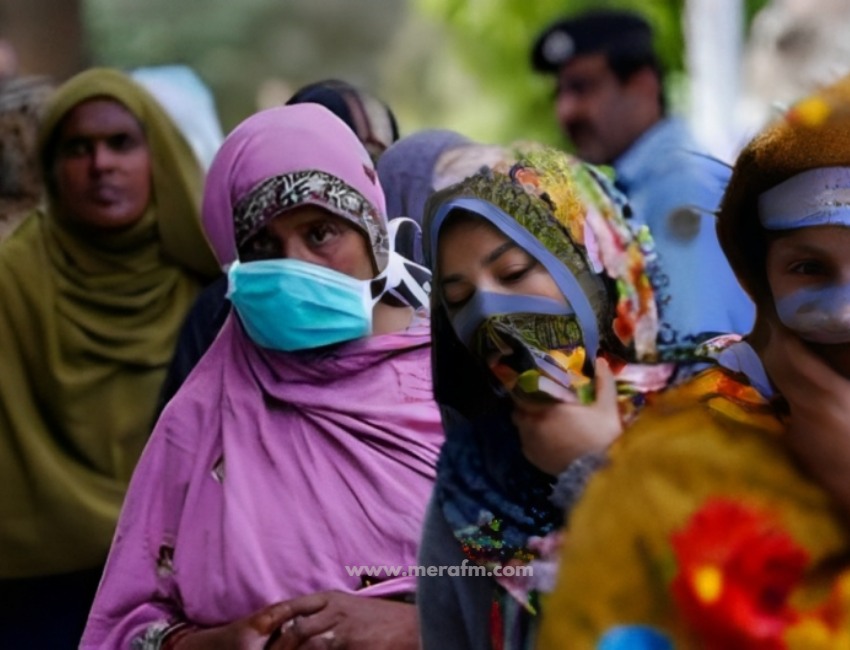
Pakistan at risk of encountering new Covid variant from China
A new Covid-19 variant entering in Pakistan?
Islamabad, Dec 24 (IANS) As the neighbouring nation lifted its lockdown and travel restrictions, China’s decision to dismantle its “zero-Covid” regime increased Pakistan’s risk of coming into contact with a new Covid-19 variant, the National Command and Operation Centre (NCOC) said on Saturday.
According to the NCOC, the new variant may enter Pakistan following the easing of coronavirus-related restrictions in China, which underwent a sudden change in policy. After demonstrations against its strict regulations against the Covid-19 pandemic started three years ago, the nation loosened its regulations.
Also Read: Covid-19 was a ‘man-made’ virus, claims Wuhan lab scientist
Is Pakistan able to manage the new Covid-19 variant?
However, NCOC representatives claimed that Pakistan is fully equipped to manage the new variant. They claimed that the nation had previously responded quickly to the Covid-19 variants.
They added that 90% of Pakistan’s eligible population has been immunised, indicating a low risk associated with the Covid-19 vaccine. According to the officials, 95% of people have received at least one dose of the vaccine, The News reported.
In the meantime, 13 people tested positive for the illness in the past 24 hours, according to data released on Saturday by the National Institutes of Health (NIH).
Also Read: New models predict at least 1 million deaths in China amid covid surge
In the previous 24 hours, 4,403 people underwent Covid-19 diagnostic tests, and 17 patients are currently receiving critical care. Pakistan reported another virus-related death on December 9.
Have something to add to the story? Comment down below!

New models predict at least 1 million deaths in China amid covid surge
Deaths in China amid Covid surge
According to several analyses, there will be a sharp increase in virus-related deaths in China, where the covid-19 outbreak is rapidly spreading. Up until now, the country has largely managed to contain the coronavirus.
Also Read: Covid-19 was a ‘man-made’ virus, claims Wuhan lab scientist
Zero Covid policy?
China’s strict “zero covid” policies were dramatically relaxed earlier this month as a result of a wave of protests in towns and cities where residents had grown weary of years of strict lockdowns, mass testing, and centralised quarantines. The protests represented China’s largest display of recent public discontent.
But due to limited exposure, low vaccination rates, and inadequate investment in emergency care, a large portion of China’s 1.4 billion people are still at risk for contracting the virus. And now, according to Reuters, Beijing’s capital’s funeral homes and crematoriums are having trouble keeping up with demand.
The horrifying number of deaths predicted
The Institute for Health Metrics and Evaluation (IHME), a centre for global health research at the University of Washington in Seattle, predicted on Friday that by April, the number of deaths from the COVID-19 virus in China would rise to more than 322,000. According to a Reuters analysis of the report, China could experience more than 1 million coronavirus deaths in 2023, up from the current official death toll of just 5,235.
Also Read: Rare success for Alzheimer research unlocks hope for future therapies
That would bring China’s death toll up to parity with the United States, where the covid-19 pandemic has claimed the lives of 1.1 million people. “However way we look at it, it’s very likely that the next few months are going to be quite challenging for China,” IHME director Christopher Murray said earlier this month. “The populations at greatest risk in the world are those that have avoided a lot of transmission and have gaps in vaccination. And that’s exactly the case for China.”
In December 2019, the Chinese city of Wuhan saw the first appearance of the virus, which then spread quickly throughout the world. However, following that initial outbreak, Chinese authorities adopted a strict strategy to stop the spread of the disease, sealing the nation’s borders, isolating patients and their contacts, and in some cases, locking down entire cities.
Have something to add to the story? Comment down below!

Covid-19 was a ‘man-made’ virus, claims Wuhan lab scientist
Covid-19, a man-made virus?
According to The New York Post, a US-based scientist who worked at a research lab in China’s Wuhan revealed Monday that Covid-19 was a “man-made virus” that had leaked from the facility.
Andrew Huff, (EcoHealth Alliance) a New York-based non-profit dedicated to the study of infectious diseases, stated that the coronavirus had leaked from the Wuhan Institute of Virology in China more than two years ago. He also accused authorities of the “worst US intelligence failure since 9/11.”
Also Read: Ebola Virus outbreak in Uganda, how worried are researchers?
A virus leak in 2019 from Wuhan lab!
Huff claims in his new book, The Truth About Wuhan, that the US government funded coronaviruses in China. With no biosafety safeguards in place, China’s gain-of-function experiments. Those are used to genetically alter organisms in order to improve their biological functions. That resulted in a leak at the Wuhan lab.
Furthermore, epidemiologist Huff revealed that “foreign laboratories did not have adequate control measures in place to ensure proper biosafety, biosecurity, and risk management. Which ultimately resulting in the lab leak at the Wuhan Institute of Virology.”
Also Read: Rare success for Alzheimer research unlocks hope for future therapies
EcoHealth Alliance has been studying coronaviruses in bats for over a decade, with funding from the National Institutes of Health, and has formed close ties with the Wuhan lab. Huff worked for the non-profit from 2014 to 2016, rising to the position of vice president in 2015.
A genetically engineered agent!
“China knew from day one that this was a genetically engineered agent,” Huff wrote. “I was terrified by what I saw,” Huff, who is an Army veteran from Michigan, told The Sun Online. “We were just handing them bioweapon technology.”
Over the last two years, the Wuhan lab has been at the centre of global debates about the origins of the coronavirus. The Chinese government and Wuhan lab officials repeatedly deny the allegations. They label the theory that the virus originated in China’s lab facility “baseless.”
However, top researchers have continued to investigate the virus’s origins.
The mismanaged virus and chaos for the world!
In February 2022, a World Health Organization (WHO) expert group sent two letters to senior Chinese government officials requesting information about the first human cases of COVID-19 in the city of Wuhan. Furthermore, the experts at WHO asserted that numerous studies in this field of research should be conducted “with the staff in the laboratories tasked with managing and implementing biosafety and biosecurity,” which would then lead to revelations about how viruses related to COVID-19 were managed.
Have something to add to the story? Comment down below!
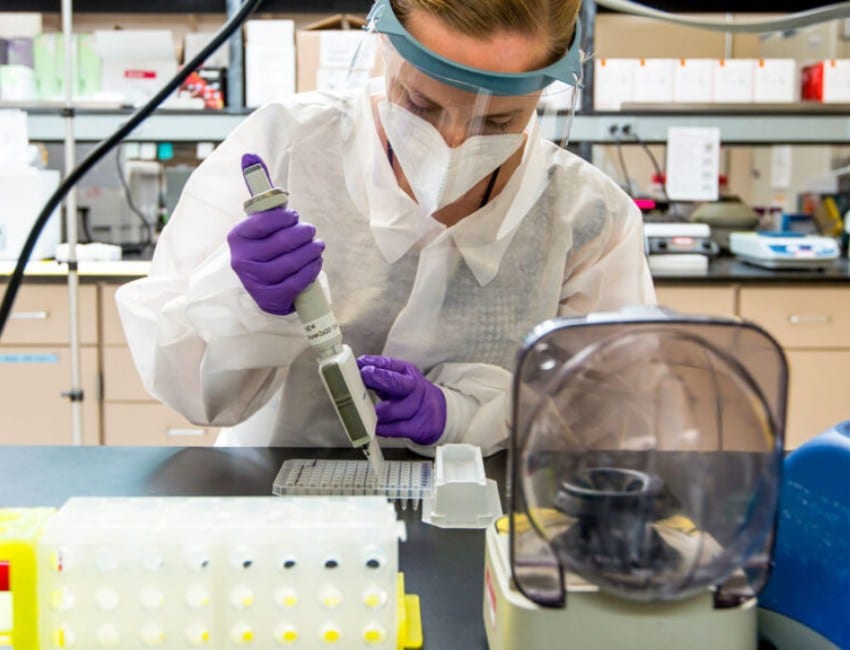
Rare success for Alzheimer research unlocks hope for future therapies
Rare success for Alzheimer research unlocks hope
CHICAGO, Nov 29: According to interviews with researchers and pharmaceutical executives, the first major breakthrough in Alzheimer’s research in 30 years is providing momentum for clinical trials of “cocktail” treatments targeting the two hallmark proteins associated with the mind-robbing disease.
Also Read: Ebola Virus outbreak in Uganda, how worried are researchers?
Eisai Co Ltd (4523.T) and Biogen Inc. (BIIB.O) reported in September that their therapy lecanemab could slow disease progression by 27% over 18 months when compared to a placebo.
The discovery validates the theory that clearing the amyloid protein that forms clumps in Alzheimer patients’ brains could slow or stop the disease, and it has strengthened some scientists’ support for simultaneously targeting another notorious protein linked to Alzheimer’s: tau.
Also Read: Everything to know about Dengue Fever and how to prevent it
When will it get approval?
On Tuesday, Eisai and Biogen will present full data from their lecanemab study at the Clinical Trials on Alzheimer’s Disease conference in San Francisco. The Food and Drug Administration is expected to make a decision on the companies’ application for accelerated approval by early January.
“I think lecanemab has reinvigorated the idea that now you could do a combination of amyloid (and) tau,” Dr. Reisa Sperling, a neurologist and Alzheimer’s researcher at Harvard Medical School, said in an interview.
Tau, the lifesaver!
Tau naturally accumulates in the medial temporal lobe of the brain, a memory centre. According to a growing body of research, rising amyloid levels in Alzheimer patients act as an accelerant, causing an explosive spread of tau that forms toxic tangles inside brain cells, eventually killing them.
Also Read: Miracle drug shows 100% remission for all cancer patients in drug trial
“We’ve been trying to do combination trials for years,” Sperling said. Nearly a decade ago, Alzheimer’s experts met in Washington to discuss testing combined therapies. At the time, “no one would listen,” she said.
The scientists expect to hear back on funding by the end of the year. The National Institutes of Health, which oversees NIA, has stated that it does not discuss grants that are under review.
Have something to add to the story? Comment down below!
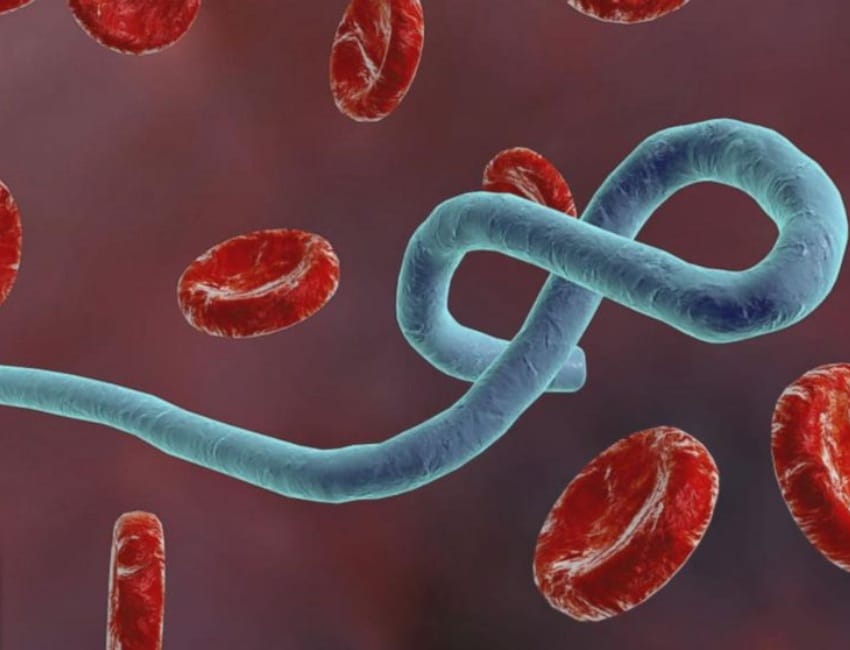
Ebola Virus outbreak in Uganda, how worried are researchers?
Ebola outbreak in Uganda
At least 64 people in Uganda have been infected, with a rare strain of the Ebola virus for which no available vaccine. Approximately 30 people have died. The rapid spread of the deadly virus across five districts in Uganda has alarmed scientists. It fears that the outbreak will be difficult to contain.
What is Ebola Virus?
Ebola is a rare and deadly disease, with death rates ranging from 25% to 90% in previous outbreaks. The first symptoms are usually fever, vomiting, headaches, and fatigue. However the condition can quickly worsen to include organ damage and death.
Also Read: Everything to know about Dengue Fever and how to prevent it
What are the main viral species of Ebola Virus?
Human Ebola is caused by two main viral species: Zaire ebolavirus and Sudan ebolavirus. From 2013 to 2016, the Zaire ebolavirus caused a large epidemic in West Africa, spurring the development of vaccines and treatments that have since transformed the fight against Ebola. However, similar therapies for Sudan ebolavirus, which is causing the current outbreak in Uganda, are still in clinical trials. The most recent outbreak of this species occurred in Uganda in 2012.
Also Read: Miracle drug shows 100% remission for all cancer patients in drug trial
According to Fiona Braka, an emergency-response programme manager at the World Health Organization Regional Office for Africa in Brazzaville, Republic of Congo, the situation is dire.
How dangerous is Ebola Virus?
There have been five previous Ebola outbreaks in the country, four of which were caused by the Sudan species. An outbreak in 2000, Uganda’s largest to date, resulted in 425 infections and 224 deaths. As a result, Uganda is familiar with the rapid-response measures required to contain the virus, and Ebola is not new to the country.
Sudan ebolavirus had not been known to cause human infection in over a decade, but it was only a matter of time before it reappeared. “These viruses are out there,” says Kartik Chandran, a virologist at Albert Einstein College of Medicine in New York City. “And we don’t have a good handle on where they hang out in nature, and how they transmit to people,” he adds.
How the virus transmits?
Ebola outbreaks have been difficult to contain because animals like monkeys and bats can carry the viruses and transmit them to humans. In rare cases, the viruses can remain dormant in a person’s body for months or even years after infection1, only to resurface and spread to others.
Vaccines of Ebola Virus?
Due to the rarity of Sudan ebolavirus outbreaks, researchers have not been able to thoroughly test vaccine candidates. Three vaccines have undergone preliminary tests to ensure their safety in humans, but larger trials to confirm efficacy have not been possible.
The good news is that clinical trials for these experimental vaccines and treatments are being organised at a breakneck pace. Researchers hope to begin trials later this month. In contrast to the more than eight months it took to begin trials during the large West African epidemic, he adds.
The outbreak is currently at a tipping point. Containment measures are being implemented in the hopes of halting the spread. However, there is still concern that it could “really get out of hand.”
Have something to add to the story? Comment down below!
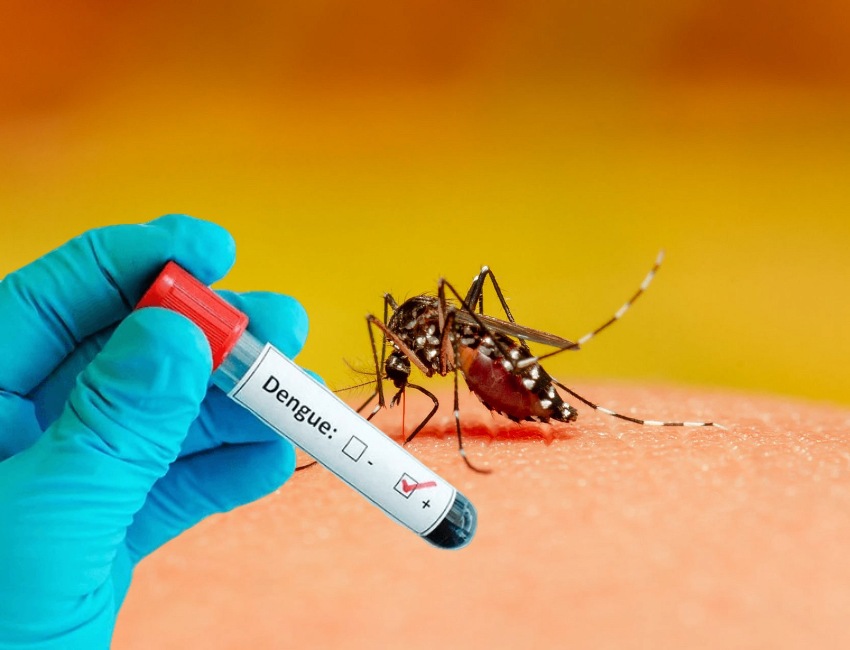
Everything to know about Dengue Fever and how to prevent it
What is Dengue Fever?
Dengue (DENG-gey) fever is a mosquito-borne illness that occurs worldwide in tropical and subtropical areas. Mild fever is characterised by a high fever and flu-like symptoms. Dengue hemorrhagic fever, also known as severe dengue fever, can result in severe bleeding, a sudden drop in blood pressure (shock), and death.
Every year, millions of people become infected with dengue. Southeast Asia, the western Pacific islands, Latin America, and Africa are the most affected by this fever. However, the disease has spread to new areas, including local outbreaks in Europe and the southern United States.
Dengue fever vaccines are being developed by researchers. For the time being, in areas where dengue fever is common, the best ways to avoid infection are to avoid mosquito bites and to take steps to reduce the mosquito population.
Also Read: India confirms Asia’s first monkeypox death
Symptoms
Many people have no signs or symptoms of the fever. When symptoms do appear, they can be confused with other illnesses, such as the flu, and usually appear four to ten days after being bitten by an infected mosquito. Moreover, it causes a high fever of 104 degrees Fahrenheit (40 degrees Celsius) as well as any of the following signs and symptoms:
- Headache Muscle,
- Bone or joint pain
- Nausea
- Vomiting
- Pain behind the eyes
- Swollen glands Rash
Is Dengue Fever life threatening?
Most people recover in about a week. Symptoms can worsen and become life-threatening in some cases. This condition is known as severe dengue, dengue hemorrhagic fever, or dengue shock syndrome.
Furthermore, when your blood vessels become damaged and leaky, you develop severe dengue. In addition, the number of clot-forming cells (platelets) in your blood decreases. Shock, internal bleeding, organ failure, and even death can result from this.
Also Read: Miracle drug shows 100% remission for all cancer patients in drug trial
Moreover severe dengue fever, which is a life-threatening emergency, can manifest quickly. The following symptoms may appear within the first day or two after your fever has subsided:
-Severe stomach pain
-Persistent vomiting
-Bleeding from your gums or nose
-Blood in your urine, stools or vomit
-Bleeding under the skin, which might look like bruising
– Difficult or rapid breathing
-Fatigue
-Irritability or restlessness
When to see a doctor in Dengue?
Severe dengue fever is a medical emergency that can be fatal. If you have recently visited an area with Dengue fever. Or if you develop any of the warning signs, seek immediate medical attention. Severe stomach pain, vomiting, difficulty breathing, or blood in your nose, gums, vomit, or stools are all warning signs.
Dengue fever in Pakistan
The cases have increased in recent weeks in the city, where civic conditions have deteriorated due to heavy rains over the last two months, it was revealed on Monday.
Senior health officials stated that a large number of dengue patients were reporting to doctors these days, and that people experiencing sore throats and high-grade fevers should get tested for the mosquito-borne disease within 24 hours of developing these signs and symptoms.
Also Read: What is Monkey Pox? Everything to know about the virus!
Do not self medicate!
They warned that poor patient management by any (unqualified) doctor, as well as self-medication, including the use of antibiotics, steroids, and even common medicines, which actually reduced platelet levels, could complicate the case and lead to death.
According to sources, the Sindh Infectious Disease Hospital and Research Centre is currently treating the most dengue patients, 45. Furthermore, according to the sources, 45 children are also treated at the facility for dengue, pneumonia, meningitis, enteric fever, dysentery, and diarrhoea.
In the first five days of September, the health department recorded 347 cases, with the majority of the cases reported in Karachi East (113). 1,265 cases are reported in August 2022.
Have something to add to the story? Comment down below!

India confirms Asia’s first monkeypox death
Monkeypox horrors enter South Asia, confirms first death in India
KOCHI, INDIA: On Monday, India announced the death of its first Monkeypox victim, a young man in the southern state of Kerala, the outbreak’s only other known fatality.
Brazil reported its first monkeypox-related death last week, while Spain recorded two. A first in Asia, the death occurred in India. On July 23, the World Health Organization deemed the outbreak to be a global health emergency.
Kerala’s revenue minister informed reporters that the 22-year-old Indian man had passed away on Saturday and that the administration has isolated 21 other people who had come into contact with him.
Also Read: What is Monkey Pox? Everything to know about the virus!
“The person reached Kerala on July 21 but visited a hospital only on July 26 when he displayed fatigue and fever,” Minister K. Rajan said, adding that there was no reason to panic as none of the primary contacts were showing symptoms.
The man’s relatives informed authorities the day before that he had tested positive in the United Arab Emirates before coming back to India, Kerala’s health minister Veena George told reporters on Sunday.
The government of India’s federal health ministry declined to comment on the fatality other than to note that a task force of senior officials had been established to keep track of Monkeypox cases in the nation, where at least five infections have been reported by local media.
Also Read: Govt to start covid-19 vaccination of children over 5
Total cases of Monkeypox worldwide
The majority of the 18,000 cases of Monkeypox, which were reported by 78 nations late last month, were in Europe, according to the WHO.
It claims that the Monkeypox virus primarily affects central and west Africa. And it causes a sickness with milder symptoms than smallpox. Animals can spread the sickness to people. Contact with bodily fluids, sores on the skin or on internal mucosal surfaces, such as those in the mouth or throat, respiratory droplets, and infected objects are all ways that human-to-human transmission can occur.
Have something to add to the story? Comment down below!




